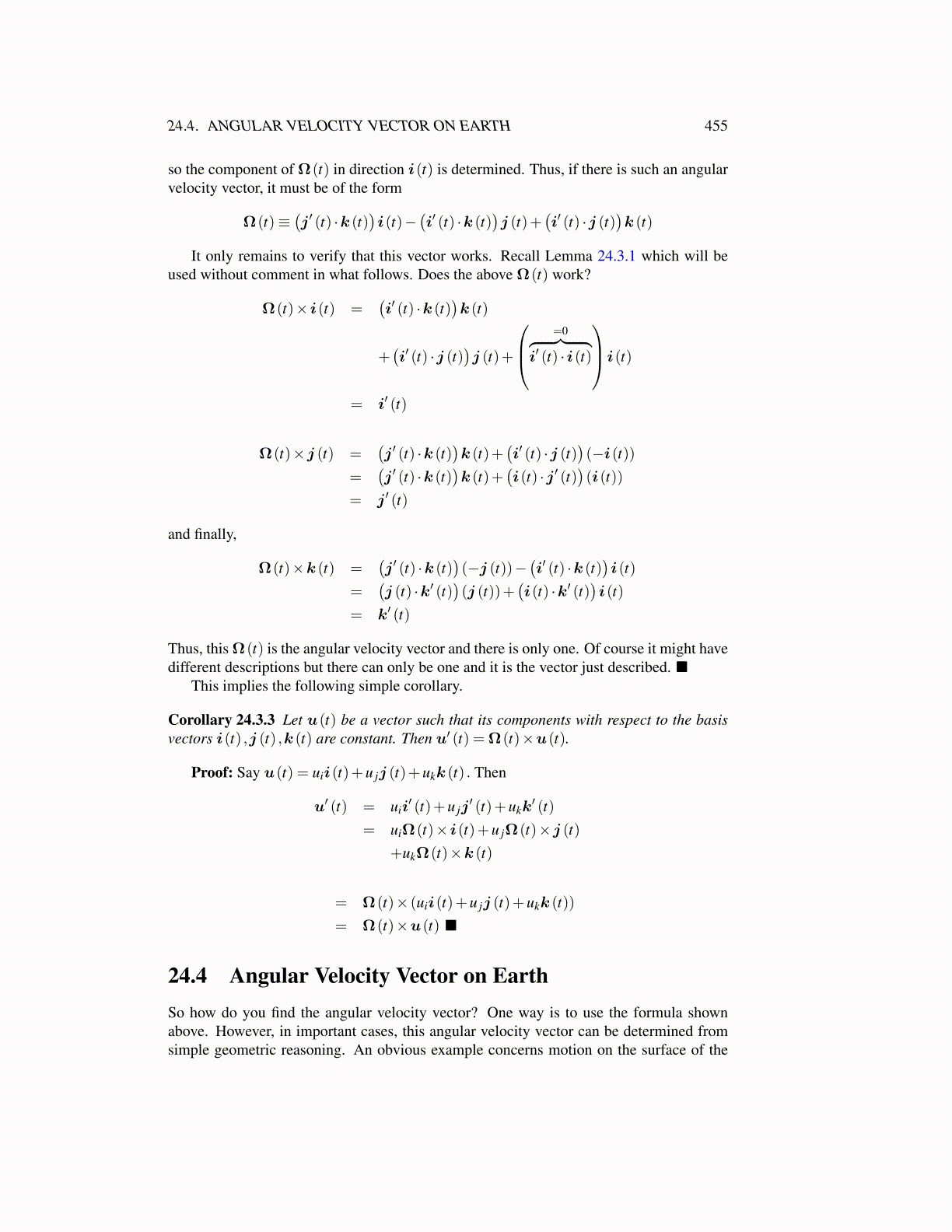
24.4. ANGULAR VELOCITY VECTOR ON EARTH 455
so the component of Ω(t) in direction i(t) is determined. Thus, if there is such an angularvelocity vector, it must be of the form
Ω(t)≡(j ′ (t) ·k (t)
)i(t)−
(i′ (t) ·k (t)
)j (t)+
(i′ (t) ·j (t)
)k (t)
It only remains to verify that this vector works. Recall Lemma 24.3.1 which will beused without comment in what follows. Does the above Ω(t) work?
Ω(t)× i(t) =(i′ (t) ·k (t)
)k (t)
+(i′ (t) ·j (t)
)j (t)+
=0︷ ︸︸ ︷i′ (t) · i(t)
i(t)
= i′ (t)
Ω(t)×j (t) =(j ′ (t) ·k (t)
)k (t)+
(i′ (t) ·j (t)
)(−i(t))
=(j ′ (t) ·k (t)
)k (t)+
(i(t) ·j ′ (t)
)(i(t))
= j ′ (t)
and finally,
Ω(t)×k (t) =(j ′ (t) ·k (t)
)(−j (t))−
(i′ (t) ·k (t)
)i(t)
=(j (t) ·k′ (t)
)(j (t))+
(i(t) ·k′ (t)
)i(t)
= k′ (t)
Thus, this Ω(t) is the angular velocity vector and there is only one. Of course it might havedifferent descriptions but there can only be one and it is the vector just described. ■
This implies the following simple corollary.
Corollary 24.3.3 Let u(t) be a vector such that its components with respect to the basisvectors i(t) ,j (t) ,k (t) are constant. Then u′ (t) =Ω(t)×u(t).
Proof: Say u(t) = uii(t)+u jj (t)+ukk (t) . Then
u′ (t) = uii′ (t)+u jj
′ (t)+ukk′ (t)
= uiΩ(t)× i(t)+u jΩ(t)×j (t)
+ukΩ(t)×k (t)
= Ω(t)× (uii(t)+u jj (t)+ukk (t))
= Ω(t)×u(t) ■
24.4 Angular Velocity Vector on EarthSo how do you find the angular velocity vector? One way is to use the formula shownabove. However, in important cases, this angular velocity vector can be determined fromsimple geometric reasoning. An obvious example concerns motion on the surface of the